One of Southwest Portland’s most passionate advocates for a safer Barbur Boulevard said Tuesday that he was nearly killed while biking on the street.
“FYI since you’re waiting for someone to die before safe Barbur bike access: it was almost me today,” wrote Damian Miller, an assistant director of research and assessment at Lewis and Clark College’s graduate school, in the first of a trio of open Twitter messages to the Oregon Department of Transportation and its new regional manager. “Speeding delivery truck came up behind honked, veered wildly, almost hit me & left lane car.”
Though the route’s design evokes a freeway, it’s the only flat and direct street between most of Southwest Portland and the rest of the city. During the summer, about 300 to 500 people bike it each day.
As Miller discussed in a 2013 video interview with The Oregonian, it’s not just bikes that seem to be unsafe on this mile-long wooded stretch of Barbur Boulevard connecting Southwest Portland to the rest of the city. On average, one person has died there each of the last six years.
All but one of those collisions were speed-related.
Advertisement
Last summer, ODOT studied the effects of reducing the street to one lane in each direction for a construction zone, and found that the number of people traveling at 55 mph or faster fell 68 percent.
It also found that average peak travel times on the busiest weekdays increased by only about one minute, and that essentially no one bothered to change routes.
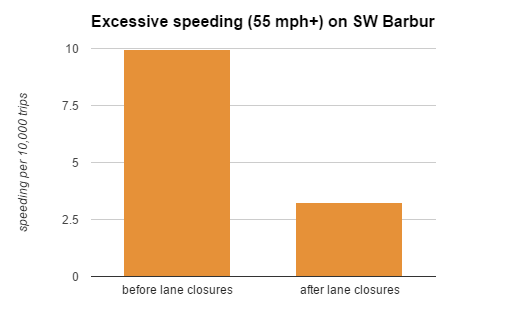
(Data via ODOT. Chart by BikePortland.)
ODOT has offered various explanations for its not wanting to restripe the street to remove unnecessary passing lanes. Among them: that Barbur should serve as a permanent safety valve for the days when Interstate 5 becomes congested by a car crash; that Barbur needs to preserve its excess auto capacity in case an earthquake shuts down I-5 but not Barbur; and that without all its current space devoted to car traffic, the street might become congested by 2035.
Miller seemed to be alluding to the last of these possibilities in his final tweet about the issue Tuesday night.
“I lived,” he wrote. “You get to keep lanes for theoretical future traffic that’s more important than my life.”
The most likely decision-maker on this issue is ODOT’s Portland regional manager Rian Windsheimer, who to our knowledge hasn’t yet taken a public position about Barbur since being promoted into the position last year.


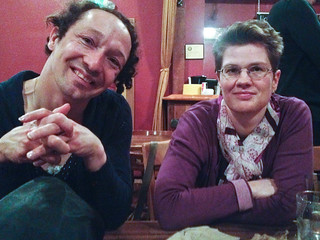
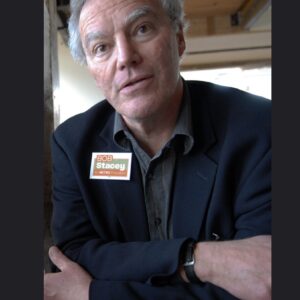

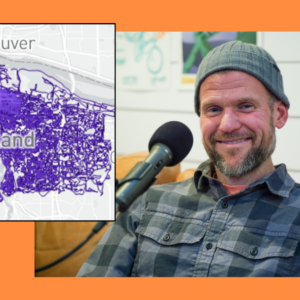
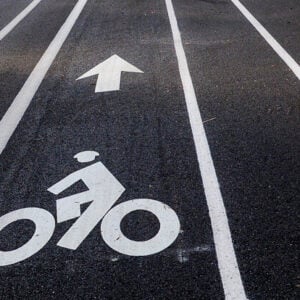
Thanks for reading.
BikePortland has served this community with independent community journalism since 2005. We rely on subscriptions from readers like you to survive. Your financial support is vital in keeping this valuable resource alive and well.
Please subscribe today to strengthen and expand our work.
How long until Matthew Garrett’s time is up at ODOT? He talked a good game…but.
A response from Mr. Windsheimer on this issue would be great to have.
The closest I ever came to death riding a bike was also on this stretch of roadway. I have also told my story to ODOT and it is in their file.
And the carnage continues…..and people wonder why many of us believe Portland needs it’s platinum status DOWNGRADED NOW. This ONE roadway proves it.
Penalize Portland for ODOT roads?
Penalize Portland for the current transportation commissioner, mayor and other city council members for not calling, pushing, and publicly shaming ODOT. ABSOLUTELY.
Again, it is NOT the planners or bureaucrats that is the problem in Portland. It is CITY HALL right now. I see no pressure, I see no press releases, I see no “need for speed” to fix this.
The tragedy is that this road should be a highlight of Portland’s biking network. There is the space to make a comfortable separated facility that would offer some amazing views of the city and make the road safer for cars as well.
IMO, the city insisting on being paid to take orphan state highways is part of the problem.
I wasn’t aware of this. What does the city expect of ODOT, and is this the same for Lombard, 82nd etc.?
Yes. These are called “Orphan Highways.” They are owned by ODOT as they used to many decades ago be the main highways. PBOT, since it is chronically underfunded, wants them but only if they are up to city standards for safety, crosswalks, and sidewalks. PBOT has enough problems with substandard streets, they can not afford to take ODOTS without they bringing them up to code first.
ASSUMING Salem can pass their gas tax increase, there will be a ..admittedly pitiful…1 cent a gallon dedicated to bring these highways up to city standard and transfer like Sandy and MLK back in the day.
“They are owned by ODOT”
Actually they are owned by us, as are all roads. ODOT just (supposedly) takes care of them on our behalf.
Absolutely…so ODOT should say…”Well, until we get the funding to fix this roadway and transfer it to you, how would you like it striped in the Meantime, as the high accident and fatality rate concerns us?”
but no….even though it is just paint and signs.
Jurisdictions responsible for roadways bear the liability for the implemented design. ODOT’s choices for design appear to be aimed at prioritizing the safety and mobility of one mode over others.
Of course it’s part of the problem, but the city is currently unable to adequately maintain the roads for which it is already responsible. To some extent that’s a self-inflicted problem (poor spending priorities, syphoning fees paid by utilities for using the road rights of way for other “priorities,” failure to enact a local option gas tax, discounts to developers, etc.).
Accepting the ODOT highways in their current deficient condition reminds me a little of the time many years ago when a neighbor offered my brother a car. The car wasn’t currently running, the neighbor had partially disassembled it as a prelude to rebuilding the engine, and it would have to be towed. Even though it was a “free” car and my brother really wanted a car, he realized he couldn’t afford it.
Portland accepting the ODOT highways in their current condition might be as expensive as if my brother had accepted that “free” car.
“Portland accepting the ODOT highways in their current condition might be as expensive as if my brother had accepted that ‘free’ car.”
This is silly. It’s just tax dollars. ODOT gets some (for Barbur) now and should pass those dollars along to PBOT if/when the transfer happens.
Bringing Barbur up to ‘our’ standards is another matter entirely, but I don’t think this is anything a lusty bump in the gas tax couldn’t take care of in about a fortnight.
the new burdens would include the bridges on Barbur that don’t cross freeways. Another issue with the way things are currently measured is that once ODOT upgrades one of their roads and transfers it to the local jurisdiction, the road doesn’t count as part of their system, so they get little credit in their inventory for improvements.
On balance, I think a no-strings attached approach would work in Portland’s favor. Congestion is our friend in Portland since safety of all users is ranked higher than mobility of people driving. ODOT, like most state DOTs, is all about moving people fast and safe in their cars. It’s a hold-over from their historical duties, where the highways were usually there before the cities grew up around them.
ODOT revenues are not based on miles of highways under its jurisdiction. Barbur does not have an allocation of ODOT revenues so there’s not a set number of dollars to pass along with a transfer.
You and I are both in favor of a hefty increase in the gas tax, but it’s increasingly looking like it’s not going to happen again. I hope I’m wrong, but the Repubs are refusing to consider it because the Democrats passed the low-carbon fuel mandate.
The failure by Salem to enact a gas tax increase does at least open that avenue for Portland if Novick and Hales can swallow their pride and back off the street fee proposal based on trip generation/income/dwelling size/non-PERS income/exempting businesses, or whatever they last considered.
Barbur isn’t flat: it’s a hill, requiring a steady climb out of Portland and fast descent into Portland. Less steep of a hill than some of the other routes out of town, which some people seem to feel makes it worth riding alongside this major highway used by many thousands of people driving motor vehicles.
The kind of road use behavior Damian Miller experienced and related in his tweet to ODOT about a “Speeding delivery truck …”, is not limited to Barbur Blvd. Further, he doesn’t relate anything indicating that the behavior he experienced on that road, is a direct result of the road’s design.
By the way, did the experience he described occur near the road’s bridges at which point the bike lanes temporarily merge with the main traffic lanes? The absence of bike lanes across the bridges seems to have been some people’s prime arguing point for reconfiguring the road for a reduction in main traffic lanes.
It’s less steep than EVERY other route to the area.
I think the obvious implication is that it occurred on one of the bridges, hence the reason the driver swerved into the left lane. Twitter forces one to utilize their inference skills.
That aspect of Barbur–45 mph (actually often more) traffic abruptly sharing a lane with a bike–is certainly special, if not “limited” to Barbur. And that is absolutely a product of the road design, that being the sudden disappearance of bike lanes.
Why do you insist on being intentionally obtuse?
“…the obvious implication…” Gary
Implication doesn’t cut it. Miller should say whether it happened near the bridges or whether it didn’t. There’s plenty of roads posted for 45 mph on which bike lanes abruptly end, so that’s nothing new. Maybe this is something you somehow have not yet realized.
As for the bike lanes abruptly ending, check again. Pavement markings for the bike lane in advance of the bridges indicate a merge either in to the main lane, or onto the sidewalk. Some people have said that though there is advance notice made by this means, the merge doesn’t begin quite far enough in advance. ODOT could possibly adjust the merge lines for a longer advance notice, easily enough.
“…the obvious implication…” Gary
There are just two bridges over a rather long section of Barbur, between Terwilliger and Portland. Miller should say whether it happened near or over the bridges or whether it didn’t. There’s plenty of roads posted for 45 mph on which bike lanes abruptly end, so that’s nothing new. It’s not uncommon for people driving to reduce speed abruptly, or lurch from one lane into another because of other road users, whether they’re driving or biking.
As for the bike lanes abruptly ending, pavement markings for the bike lane in advance of the bridges indicate a merge either in to the main lane, or onto the sidewalk. Some people have said that though there is advance notice made by this means, the merge doesn’t begin quite far enough in advance. ODOT could possibly adjust the merge lines for a longer advance notice, easily enough.
Is there a place for PDX’s cyclists and pedestrians to document their stories of near-misses and aggressive motorists? I bet many of us have stories similar to Damian’s.
That’s certainly true, and highlighting Miller’s experience with this post isn’t intended to diminish the many other times things like this happen. This one rose to the level of a post because he’s been such a big part of this advocacy and because the situation on Barbur is extra-bizarre.
There have been various attempts over the years to build an online “close calls” database; here’s the most recent one I’ve seen. With city-owned roads, your best bet is probably calling 503-823-SAFE or using the PDX Reporter app. This goes on city books and triggers possible action by staff. With ODOT roads, you could try the ORCycle app, but it’s experimental.
Some other possibilities:
– email Michael or Jonathan (both @bikeportland.org) to see if it rises to the level of a post
– contact local advocacy groups, if they exist, such as Friends of Barbur
Other readers may have other ideas.
ORcycle works for close calls on all facilities, not just ODOT ones, but it’s true that ODOT is invested in ORcycle.
Thanks, Justin. My concern about recommending ORcycle is that as I understand it, it’s sort of an informational black hole … a couple months ago I heard a story of a PDX Reporter report of a malfunctioning traffic signal being addressed within hours. ORcycle, by contrast, collected like six months of data before handing any of it to anyone.
Nothing against ORcycle — experiments are important — but it doesn’t seem to me like a functioning solution.
Oh, I didn’t mean for my previous post to sounds as selfish as it does when I re-read it. I’ve very glad Damian is okay and was not trying to take the focus off of him.
My thinking was that, in every meeting I’ve been to with PBOT, they claim that their data shows that biking is safe in Portland, in defense of the current quality of infrastructure. I’d love to have a stack of stories like Damian’s, the terrifying close calls that never register on any metric, and drop them in the laps of PBOT and ODOT.
>>During the summer, about 250 to 500 people bike it.
that really isn’t a lot for a summer.
Do you mean per day or per hour ?
It is per day, but this is a 500 foot elevation gain from the central city. SW has the lowest bike commuting rates in the city, but Barbur is the ONE nice, straight and generally flat route. It should be the premier bikeway through the SW corridor, if it is was that 500 would shoot up fairly quickly. I commuted that way for five years, it has always been a risky venture. Only the most assured of cyclists will take it.
Terwilliger probably is actually less of a workout than Barbur, due to the undulation and the way you can leverage momentum to get up some of the climbs on it. Barbur is just straight climb the whole way basically… if we’re talking about getting to Capitol from the Naito area.
That’s why I actually prefer Barbur… because it’s a better workout… and that’s usually the reason I’m on my bike in that area, anyway.
But if safety is the most important factor for you, you can skip the most dangerous portion of Barbur (the bridge sections) entirely by diverting up to Terwilliger.
It’s definitely not a lot considering that it serves tens of thousands of SW Portlanders. Many more than 500 of them would surely love to be riding their bikes to other parts of the city once in a while.
If ODOT’s concern is the occasional car crash and then literally earth shattering events, maybe they could restripe and have a bunch of traffic cones somewhere? When you have to evacuate a city, you get to direct traffic however actually works.
In hurricane country, where I hail from, there is a bit of infrastructure to allow for northbound traffic on southbound interstate lanes. They didn’t build an extra two lanes everywhere for in case there’s a hurricane.
I’m not sure how we’re going to evacuate to the south either. They’re subject to the same earthquake and don’t have the housing to deal with the influx…
More importantly on the earthquake issue: they’re telling me those two 80-whatever-year-old wooden Barbur bridges are going to survive the earthquake that knocks out the brand new I-5 viaducts?
it is possible. wood is a natural fiber that can flex a lot. Concrete has very little ability to flex and almost no strength in tension. Steel is added for both compression and tension strength and the concrete helps with compression and keeping the small steel bars fixed in place an protected from the environment.
Depending on the motion from the earthquake (side to side, udulation (like standing in a row boat) or vertical) a wooden structure may be able to withstand the forces better than concrete.
Recently, tall wood structures have been built for such reasons.
Also, concrete is heavy, wood is lighter weight, so momentum comes into play.
Thanks paikiala. For sure (I am a mechanical engineer, although my comment certainly didn’t suggest that!). My thought was more on THESE wood structures. Not that I have any particular info or insights, but my casual observation is that they don’t strike me as especially robust. I’m thinking in particular of the bridge joints that were in terrible shape, although I just remembered they have been repaired. Anyway, for all the qualities of wood, the 80 year old hardware holding the wood together don’t necessarily have me convinced!
I would say ODOT has offered various excuses, not “explanations.”
When I was a member of a city’s bicycle advisory committee, we had a rule that we would only make recommendations for bicycle facilities while AT THE SITE. I remember standing on the side of the road with city staff members when we considered whether we should recommend signing a bike route at a particular location.
Maybe the ODOT Regional Manager and the ODOT Director should emulate that approach before they deny the request for restriping of Barbur.
Space or Speed Reduction – its a pretty simple equation for Safety.
Given that ODoT has operational and safety data supporting a design change and they are choosing not to act…I guess change at the top needs to happen so that the engineers can do the safe thing. Engineers are great problem solvers if they are given the right objective.
If ODoT cannot / will not set aside a safety zone for cyclist traffic (and PEDs) then speed reduction for a shared outside lane is an interim measure to evaluate. But you need a lot more than sharrows.
How about adding speed cushions in the curb lane to bring the speed differential to within 10 mph for bikes and cars? The frequency of spacing between each cushion would be adjusted to account for a downhill vs climbing lane. A slower lane might also be freight friendly vs a very out of date lane configuration that rewards speeding lane jockeys over safety. The slow curb lane would keep most non peak traffic in the middle of the road and put less pressure to speed on trucks. This would also protect’s ODoTs desire to use this route as a detour route.
Speed cushions in one lane–that is a fascinating idea! Different speeds for the two lanes never occurred to me. By no means the best solution, but a very easy one that shouldn’t be too controversial.
I also got honked and passed in the downhill right lane on the first bridge yesterday… green outback. happens every three months or so…
I usually ride around the middle of the lane.
and by passed, i mean the car veered into the other lane and narrowly avoided killing everybody on the bridge.
I think this is the part of the road where those in cars actually start ramping up their speed for the forthcoming three lane stretch…
then you see them at the stoplight.
Anecdotal, but the last two times I was flipped off by someone in a motor vehicle, it was Subarus both times.
One, an outback with an erudite young lady driving along, her hand on the horn flying the trudeau salute to riders entering Vancouver near the end of last year’s Portland Century.
And the most recent one, a charming young fellow in a stanced Impreza doing the same thing during the RVNA protest ride.
Did it have the obligatory “COEXIST” bumper sticker?
There are a lot of Subarus in Portland.
I support all efforts to make Barbur a safer route for cyclists, but in the meantime why not ride Terwilliger. more up and down, but a much more enjoyable, safer route.
I usually do when I am going to my doc’s at Fanno Creek….even after she told me the story of how her husband was hit on his bike from an auto coming from a street. SW has a bare boned network of substandard lanes, all of which have gaps and danger points.
Terwilliger is longer, and does not feel much safer. Riding downhill at the 25mph speed limit, taking the lane with a speeder tailgating you vs bumping over holes in what’s left of the bike lane since the latest storm filled it with branches. Notice how frequently they have to restripe the bike lane and how many people drive over it speeding around blind corners.
I drove Terwilliger home the other night, keeping at the 25 mile/hr speed limit. Had a line of cars right on my bumper pretty much the entire length. You’re right…hardly anyone actually drives 25 on Terwilliger.
My personal experience is that Terwilliger is far safer and better, and beautiful to ride than is Barbur. Its two lane, very twisty character by nature keeps traffic volume down and slower, compared to that on Barbur. Terwilliger’s spectacularly beautiful character has been dominated for decades by harried people driving, in no small part due I suppose to the concentrated activity up on Pill Hill. Ideas for diverting some of Terwilligers excessive motor vehicle traffic to Barbur could be something to consider.
Because people shouldn’t have to take other routes if this route gets them to their destination most directly and efficiently.
That’s like asking all the cars and trucks to only stay on the highways and freeways and not use any of the arterials, collectors, or neighborhood streets to get to their destination. It’s unrealistic.
“Because people shouldn’t have to take other routes if this route gets them to their destination most directly and efficiently. …” Kristen T
Whether to ride Barbur is a simple question of whether the route’s benefits to riding directly and efficiently to destination, are worth putting up with the noise, pollution and hazards due to the roadway’s limitations and people’s use of the road with motor vehicles.
Quite a small percentage of road users apparently think it is worth putting up with all of that to ride Barbur, so fine. It’s their choice to ride that road, rather than other routes that are more pleasant and less hazardous to ride.
Can ODOT configure for a main lane reducing ‘road diet’ on Barbur, that would allow it to still meet its obligations to city, state and Federal highway objectives for roads? This is what people wondering about ODOT’s decision to date relative to Barbur and its functionality for biking and motor vehicle use, should be asking themselves.
So far, ODOT apparently believes it must defer to the need to maintain the road proportionate to the by far, major percentage of road use with motor vehicle that occurs on the road.
In bronze Portland, we’re going to need a lot of “bike *must* use full lane” signs. Some of them may need to be posted in the road, between lanes, in front of phone screens…
bicycles on roadway signs all over! or better a buffer strip since most really don’t understand the lane law.
So I have a question could the police write tickets to drivers that fail to yield to a bicycle if in the lane when needed?
Could? Of course. (wreckless/careless/distracted driving, unsafe following distance, minimum passing space, speeding, DUI, …) Would? They’re waiting for a sale at the printer before they order a more ticket books.
If I remember correctly there was a Portland case a couple years ago where a judge dismissed the citation against a motorist for the failure to yield to a bike in a bike lane. His interpretation was that the bike lane did not actually exist through the intersection. A cop who gets his citation dismissed isn’t likely to bother with another one.
Bronze? Tin. FIFY.
Barbur is scary just east of SW 19th Ave with no shoulder but with guardrail to prevent cars from tumbling down an embankment. Barbur needs to become PBOT’s road with a well-designed, future bike trail.
Since it was a speeding delivery truck- if you we’re able to get the name of the company we could let them know of our displeasure and get the driver fired.
“A near-death experience (NDE) is a personal experience associated with impending death, encompassing multiple possible sensations including detachment from the body, feelings of levitation, total serenity, security, warmth, the experience of absolute dissolution, and the presence of a light”
Doesn’t sound like anyone here has actually had a near death experience. They had the schitt scared out of them but not an NDE.
Nothing like some pedantry in the afternoon.
Nothing like excessive hyperbole to make things sound worse than they are. Keep crying wolf and they begin to ignore you. Was it a dangerous situation, yes, was it a near death experience, no.
You don’t get invited to many parties, I’m guessing.
Obviously, the situation on Barbur needs to change, but today I’m simply relieved that Damian’s okay.
I’m glad you are ok, Damian!
there was a jumper or something on one of the bridges yesterday…
Jonathon and Michael, Thank you for continuing to report on this issue. For those whom would like to help maintain a more regular conversation as well as be informed about the latest please join the FB Group People for a Safer Barbur Blvd. Growing our numbers, organizing, and not polarizing ourselves as “cyclists” is the intent of the group. Thanks!
Here is a link to the group: https://www.facebook.com/groups/peopleonbarbur/